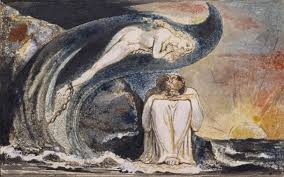Anne Michaels at Lapham’s Quarterly:
 In 1944, in Warsaw, German soldiers scrawled numbers on the buildings in white paint and then systematically demolished the city, while the Soviet army watched and waited across the Vistula. After the war, the Poles returned to Warsaw and, living in the rubble, began to rebuild. Devastated cities across Europe faced the same choices. Should the ruins be left in view, like the cathedral at Coventry, with new buildings erected beside them, a permanent memorial? Should the rubble (with its dead) be hidden and a new, modern city built on top of it? Or perhaps, as the Poles decided, the old city should be replicated, rebuilt in the same place, in every last detail—every cornice, lamppost, and windowsill—an act of defiance and despair, the fiercest response to the fact that we can’t bring back the past, we can’t bring back the dead. In this replication was a kind of terror—the calling forth of spirits and the speaking aloud of a harrowing, unanswerable doubt: that the replica might erase precisely what it was meant to memorialize.
In 1944, in Warsaw, German soldiers scrawled numbers on the buildings in white paint and then systematically demolished the city, while the Soviet army watched and waited across the Vistula. After the war, the Poles returned to Warsaw and, living in the rubble, began to rebuild. Devastated cities across Europe faced the same choices. Should the ruins be left in view, like the cathedral at Coventry, with new buildings erected beside them, a permanent memorial? Should the rubble (with its dead) be hidden and a new, modern city built on top of it? Or perhaps, as the Poles decided, the old city should be replicated, rebuilt in the same place, in every last detail—every cornice, lamppost, and windowsill—an act of defiance and despair, the fiercest response to the fact that we can’t bring back the past, we can’t bring back the dead. In this replication was a kind of terror—the calling forth of spirits and the speaking aloud of a harrowing, unanswerable doubt: that the replica might erase precisely what it was meant to memorialize.
more here.
